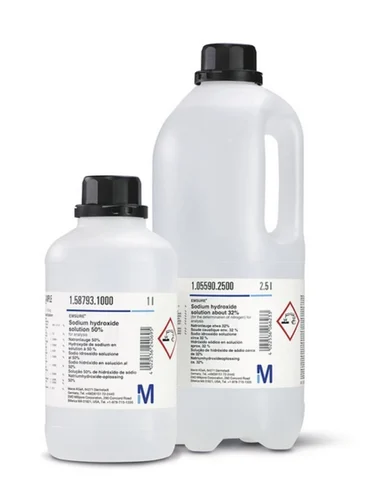Blog
Formaldehyde Lewis Structure: Detailed Analysis & Insights
When exploring the formaldehyde Lewis structure, understanding its molecular arrangement is crucial. Formaldehyde, a key compound in organic chemistry, consists of a central carbon atom bonded to two hydrogen atoms and one oxygen atom. The Formaldehyde Lewis structure helps illustrate the bonding and electron distribution within the molecule. This article will guide you through the process of drawing and interpreting the Formaldehyde Lewis structure.
What is Formaldehyde?
Formaldehyde is a simple organic compound with the chemical formula CH₂O. It is a colorless gas with a pungent odor, used extensively in industrial applications and as a disinfectant. In its molecular form, formaldehyde has one carbon atom double-bonded to an oxygen atom and single-bonded to two hydrogen atoms. This arrangement is crucial for understanding its reactivity and applications.

Drawing the Formaldehyde Lewis Structure
Step-by-Step Guide
To draw the Formaldehyde, follow these steps:
- Count the Valence Electrons:
- Carbon (C) has 4 valence electrons.
- Hydrogen (H) has 1 valence electron each (total 2 for two H atoms).
- Oxygen (O) has 6 valence electrons.
- Determine the Central Atom:
- Carbon is the central atom because it can form four bonds, while hydrogen and oxygen typically form fewer bonds.
- Draw Single Bonds:
- Connect the carbon atom to each hydrogen atom and the oxygen atom with single bonds.
- Complete the Octet Rule:
- Carbon needs to have a complete octet. To achieve this, form a double bond between carbon and oxygen, and ensure hydrogen atoms have a full outer shell with a single bond.
- Check Electron Distribution:
- Ensure all valence electrons are accounted for and correctly placed around the atoms.
Example of the Formaldehyde Lewis Structure
The final Lewis structure is represented as:
H
|H – C = O
Here, the carbon atom is double-bonded to the oxygen atom and single-bonded to two hydrogen atoms.
Significance of the Formaldehyde Lewis Structure
Understanding the Lewis structure is essential for several reasons:
- Chemical Reactivity:
- The double bond between carbon and oxygen makes formaldehyde highly reactive, which is significant in various chemical reactions and industrial processes.
- Molecular Geometry:
- The Lewis structure helps predict the molecular geometry and bond angles in formaldehyde, which are important for understanding its chemical behavior.
- Application in Organic Chemistry:
- Formaldehyde is a key intermediate in the synthesis of various organic compounds, and its Lewis structure provides insights into its chemical properties.
Common Mistakes in Drawing Lewis Structures
When drawing the Lewis structure for formaldehyde, some common mistakes include:
- Incorrect Electron Counting:
- Ensure the total number of valence electrons matches the sum of the valence electrons from each atom.
- Violating the Octet Rule:
- Verify that each atom, especially carbon and oxygen, follows the octet rule, where applicable.
- Misplacing Bonds:
- Carbon should be double-bonded to oxygen and single-bonded to hydrogen atoms. Misplacing these bonds can lead to incorrect structural representations.
Conclusion
Understanding the formaldehyde Lewis structure is essential for grasping its chemical properties and applications. By following the steps to draw and interpret this structure, you gain valuable insights into molecular bonding and reactivity. For a more in-depth exploration of molecular structures and chemistry concepts, book a free consultation session with our expert today!
FAQS
Here are the answers to your questions about formaldehyde:
- What is the Lewis structure of formaldehyde?The Lewis structure of formaldehyde (CH₂O) features a central carbon atom double-bonded to an oxygen atom and single-bonded to two hydrogen atoms.
- What is the molecular geometry of formaldehyde?The molecular geometry of formaldehyde is trigonal planar. This geometry arises because the central carbon atom is surrounded by three regions of electron density: two single bonds with hydrogen atoms and one double bond with the oxygen atom. The bond angles in a trigonal planar geometry are approximately 120 degrees.
- Is formaldehyde trigonal planar?Yes, formaldehyde is indeed trigonal planar. The central carbon atom in formaldehyde bonds with two hydrogen atoms and one oxygen atom. The carbon forms two single bonds with hydrogen and one double bond with oxygen. The three groups of electrons around the carbon arrange themselves in a trigonal planar shape to minimize electron-pair repulsion.
- What is the state geometry of formaldehyde?The term “state geometry” typically refers to the molecular geometry or shape of a molecule. For formaldehyde, the state geometry is trigonal planar. The three regions of electron density around the central carbon atom arrange themselves in a planar, triangular shape. This arrangement minimizes repulsion, as VSEPR theory (Valence Shell Electron Pair Repulsion theory) predicts.
